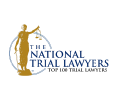The proof standards in California civil courts strongly affect how your personal injury case ends. Most personal injury claims use "preponderance of the evidence," but certain essential matters need "clear and convincing evidence" to prove their validity. Evidence must demonstrate a high likely probability of truth to establish a firm belief or conviction.
This standard applies in cases seeking punitive damages in personal injury suits. This article outlines the clear and convincing evidence requirements that plaintiffs must meet. Working with a seasoned personal injury attorney becomes essential to handle these complexities while developing the strongest possible legal position.
Definition and Legal Foundation
A comprehensive analysis of the "clear and convincing evidence" standard shows its exact definition and historical development. This standard demands evidence that establishes the truth of asserted facts as "highly probable." The evidence surpasses mere speculation because it produces a "firm belief or conviction" within the judge or jury's mind, which removes all substantial doubt.
To avoid confusion with criminal-law terms, the phrase ‘highly probable’ serves as the defining language for this standard in California courts, as set forth in CACI No. 201 (California Civil Jury Instructions).
The legal framework of an intermediate standard of proof exists throughout Anglo-American jurisdictions to handle serious allegations like fraud and moral turpitude beyond mere civil standards but below criminal thresholds. Throughout the history of the United States, the standard has been employed in diverse civil and quasi-criminal proceedings, starting with will contests and oral trust establishment cases.
The U.S. has recognized clear and convincing evidence as the appropriate standard in certain proceedings, such as deportations, in cases like Woodby v. INS | 385 U.S. 276 (1966). This approach provides stronger assurance about decisions affecting major personal rights and interests.
Historical Context and Evolution
The Evidence Code of California officially established this standard as part of its legal framework. Section 115 establishes proof burdens, including a separate standard of clear and convincing proof that applies when law mandates it, while preponderance is the default standard. Evidence Code section 662 sets out which party bears the burden in certain property-title disputes; it does not prescribe a clear and convincing standard.
The application of clear and convincing evidence in California received significant influence from the landmark Conservatorship of O.B. (2020) decision. The Conservatorship of O.B. (2020) decision made clear that the higher clear and convincing standard maintains its force from trial to appeal, so appellate courts must evaluate evidence to confirm reasonable fact-finders could find the fact "highly probable." Recent legislative updates aim to help jurors understand why this intermediate standard matters.
What is the Law in California?
The state of California follows the fundamental concepts presented about evidentiary standards. A fact must be supported by clear and convincing evidence—that is, shown to be highly likely to be true. Punitive damages in California personal injury cases require clear and convincing evidence, while compensatory damages rely on the preponderance standard.
According to California law, the plaintiff must present clear and convincing evidence that the defendant displayed malice or oppression or engaged in fraudulent conduct to obtain punitive damages. In ordinary personal injury cases, where punitive damages are not sought, plaintiffs proceed under the preponderance standard, proving that their version of events is more likely than not.
Under California law, ‘beyond a reasonable doubt’ means jurors must hold a firm conviction of the facts based on all evidence, without any hypothetical or imagined doubts.
Comparison to Other Evidentiary Standards
To comprehend the clear and convincing evidence standard, one needs to analyze its position relative to California court standards, including preponderance of evidence and beyond a reasonable doubt.
Preponderance of the Evidence
The preponderance of the evidence serves as the standard burden of proof, which applies to most civil cases in California. The party responsible for proof (typically the plaintiff) must demonstrate to the trier of fact that the fact exists with a higher than 50% probability, although slightly above the threshold. The preponderance of the evidence is the lowest standard used by civil courts to decide cases.
The standard of clear and convincing evidence exists at a higher level than preponderance of the evidence.
The main difference emerges from the established level of certainty needed for proof. A fact must demonstrate a higher than 50% probability to satisfy the preponderance standard, yet clear and convincing evidence demands an extremely high level of certainty, which exceeds "high probability." The clear and convincing standard presents a much higher barrier to prove because evidence must create a firm conviction rather than simple additional persuasiveness.
Beyond a Reasonable Doubt
The highest level of evidence required for criminal convictions in American law demands proof beyond a reasonable doubt according to the constitutional standards. Evidence at this standard must create absolute certainty about the defendant's guilt by establishing evidence that produces an "abiding conviction" or "moral certainty" in all reasonable minds.
- Why is clear and convincing evidence less rigorous than this standard?
Clear and convincing evidence demands a high probability of truth, but it does not require the absolute certainty of proof beyond a reasonable doubt. Evidence demonstrating a high likelihood of truth enables some doubt to exist under the clear and convincing standard.
A standard of beyond a reasonable doubt requires that every possible doubt disappear completely. The courts of California preserve these different standards to avoid mixing civil evidence requirements with those used in criminal proceedings.
The different standards demonstrate an essential legal concept through which the necessary level of certainty matches the severity of potential outcomes. The required standard for ordinary civil disputes involving monetary damages is preponderance. Criminal convictions (loss of liberty/life) demand proof beyond a reasonable doubt. Civil cases that demand more substantial evidence than regular matters fall between preponderance and criminal culpability standards in determining civil liability.
Substantial Evidence
A party under substantial evidence requirements must produce sufficient evidence that makes sense to an average person to support their conclusion. A substantial-evidence review requires more than mere speculation; the record must support the agency’s conclusion. The standard applies frequently in administrative law because administrative law judges need to review government agency decisions, such as DMV driver's license suspensions.
Judges who examine administrative decisions frequently use this standard for their review procedures. The standard exists between probable cause for arrests or searches and the preponderance of evidence standard.
The different standards demonstrate a core legal concept that states that the certainty required matches the severity of the potential outcomes. The preponderance standard functions in monetary civil disputes. Criminal convictions (loss of liberty/life) demand proof beyond a reasonable doubt. Civil cases requiring compelling and definite evidence exist between ordinary civil matters and criminal prosecution, yet stop short of criminal liability. The review of administrative findings relies mainly on substantial evidence as one of the intermediate standards.
Application in California Personal Injury Cases
The clear and convincing evidence standard is vital for California's specific personal injury law cases when seeking damages beyond ordinary compensation.
Punitive Damages and Evidentiary Burdens
Punitive damages exist in personal injury law to punish defendants for malice, fraud, or oppression, even though they do not compensate victims for their injuries. The California law requires clear and convincing evidence to show that the defendant's actions stemmed from oppression, fraud, or malice. The standard to prove malice, fraud, or oppression exceeds the typical requirement of establishing underlying negligence, which usually requires a preponderance of evidence.
A situation where a drunk driver inflicts severe injuries serves as an example to understand this concept. Establishing driver negligence requires a demonstration of their lack of reasonable care (preponderance). A victim seeking punitive damages must establish through clear and convincing evidence that the driver displayed malicious intent by continuing to drive drunk with excessive blood alcohol content after getting multiple DUI convictions and warnings.
Other Civil Matters
The clear and convincing standard applies in several critical civil proceedings, including parental‐rights terminations, conservatorships, trust and estate fraud, and undue influence claims. Through its various applications, the standard requires courts to reach decisions with significant impact only when evidence reaches a high level of certainty.
Burden of Proof and Evidentiary Thresholds
To establish the burden of proof, the party bringing the claim/plaintiff must present sufficient evidence to satisfy the required standard. The fact-finder demands proof from parties that must establish required certainty levels. A party that initiates a claim or asserts an affirmative defense must demonstrate evidence for all its essential elements to the fact-finder. The plaintiff must show clear evidence of malice, fraud, or oppression to receive punitive damages.
The clear and convincing standard becomes applicable through statutes, case law requirements for particular claims and defenses, and findings. This standard controls the final decision-making process of the fact-finder. The burdened party must submit evidence that demonstrates high probability and leads to firm conviction, influencing all aspects of case preparation, evidence collection, trial presentation, and jury instructions.
Interpretation of the Standard by Courts
The California judicial system applies the clear and convincing standard through its intermediate position by focusing on "high probability" standards (CACI 201) while discouraging complex wording. In bench trials, judges use this standard while instructing juries about it.
How Judges Evaluate Whether the Evidence Meets the Threshold
The assessment of evidence against a clear and convincing threshold needs to analyze the amount and the essential quality of presented proof. The evidence must present direct and unambiguous information while being persuasive and credible. The evaluation process requires courts to analyze witness reliability, consistency, supporting evidence, and the absence of conflicting evidence.
A fact-finder must analyze evidence to establish if the facts are highly probable and create a firm belief. The appellate courts must assess in Conservatorship of O.B. (2020) if reasonable fact-finders could reach such conclusions based on the trial record evidence to maintain standard integrity during appellate review.
How to Determine the Applicable Burden of Proof
The legal process demands a clear comprehension of the evidence standard that applies to your case. The correct standard selection stands as a vital initial requirement for all litigants. The correct burden of proof can be identified through legal research, which includes examining statutes and case law found online or using professional legal resources.
The first meeting with attorneys often comes at no charge, thus allowing people to understand their legal standards at no expense. Complex cases and those that present multiple claims need separate proof standards for different aspects of the proceedings. During jury duty, the judge will explain specifically which burden of proof jurors must use during their deliberations to reach a verdict.
The different proof standards demonstrate an essential legal principle because required certainty corresponds to the severity of potential consequences. The standard for proving ordinary civil disputes that result in monetary damage awards is preponderance. Criminal convictions (loss of liberty/life) demand proof beyond a reasonable doubt.
The standard for civil cases with elevated stakes falls between ordinary civil proceedings and criminal requirements, yet stops short of reaching criminal culpability. The review of administrative findings primarily uses substantial evidence as one of its intermediate standards.
Considerations for Litigants and Attorneys
You want to prepare to gather and present your evidence strategically. Some of these approaches are:
Early Case Assessment
Evaluate at the beginning of the case which claims or defenses require the clear and convincing standard for proof. The standard of evidence must meet specific requirements, which depend on the application of this standard.
Targeted Discovery
The discovery process needs to target the acquisition of compelling evidence. The discovery process should target direct admissions while seeking documents that prove the claim and finding reliable witnesses who have direct knowledge of the situation. The purpose of deposition strategies should be to obtain statements that provide direct and unequivocal information.
Witness Selection and Preparation
Select witnesses with expertise, a professional manner, and a confident demeanor. The success of any testimony depends on proper preparation to achieve clarity and consistency with persuasive qualities. Complex legal matters require expert witnesses to demonstrate evidence for things such as malice in punitive damages claims and grave disability in conservatorship proceedings.
Documentary and Physical Evidence
Evidence documentation and physical evidence should precede inferential evidence because direct proof establishes facts more effectively. Authentic evidence that directly proves the fact in question must demonstrate authenticity and clear relevance.
Corroboration
Seek multiple sources of evidence to support key factual allegations. Corroborated testimony or documents significantly strengthen the likelihood of meeting the "high probability" threshold. Confirming necessary factual evidence requires multiple independent sources verifying its validity. When combined, testimony with documented evidence increases the probability of reaching the "high probability" threshold.
Trial Presentation
Organize the presentation of evidence logically and compellingly. Use demonstrative aids effectively. Rephrase witness examination questions to obtain straightforward testimony from witnesses. During closing statements, the lawyer must describe the standard and demonstrate how the presented evidence satisfies the "high probability" threshold.
Tips For Meeting The Clear And Convincing Threshold
-
Focus on Quality over Quantity: The evaluation should focus on evidence quality rather than quantity, but must demonstrate enough evidence to be persuasive.
-
Eliminate Ambiguity: The evidence should be straightforward with direct connections that minimize interpretation possibilities.
-
Address Weaknesses Head-On: When faced with evidence of weaknesses or contradictions, the author should directly address and explain these issues instead of dismissing them.
-
Simplify Complexity: Complex facts and legal concepts should be explained to judges and juries in terms they can easily understand.
-
Leverage Jury Instructions: The trial team must ensure delivery of the proper CACI instruction (No. 201), which contains "highly probable" language, and should refer to this language during argument.
Challenges in Meeting the Standard
Common pitfalls and evidentiary weaknesses include:
-
Over-reliance on Circumstantial Evidence: Circumstantial evidence is an acceptable form of proof, yet its sole use to prove cases often lacks sufficient strength to establish "high probability" levels.
-
Witness Credibility Issues: The credibility of witnesses becomes crucial in cases requiring clear and convincing proof because impeached witnesses and those perceived as biased can destroy the entire case.
-
Lack of Corroboration: A case becomes weak when it depends on a single piece of evidence for critical facts because such evidence can become easily disputed.
-
Ambiguous Documentation: The standard cannot be met when documents contain unclear or missing information, allowing multiple interpretations.
-
Failure to Rebut Counter-Evidence: Failure to adequately refute the evidence from the opposing party creates significant doubt about the case.
-
Insufficient Evidence of Intent/Mental State: Demonstrating specific mental states associated with elements such as malice, fraud, and undue influence presents challenges to proving clear and convincing evidence when there are no direct admissions and weak circumstantial evidence.
Find a Personal Injury Law Firm Near Me
The clear and convincing evidence standard is a key element of California's legal system because it exists between the preponderance of evidence and beyond a reasonable doubt. The legal system requires evidence demonstrating a high probability of factual truth to safeguard essential rights and interests, so judgments cannot be made until a firm belief or conviction exists.
Meeting the elevated standard for punitive damage cases in personal injury litigation demands careful evidence preparation and vigorous advocacy backed by credible proof. Knowledge about how this standard functions can dramatically affect your case results.
We at The LA Personal Injury Law Firm will protect your rights when you or your loved one requires assistance with Los Angeles personal injury matters. Our team is ready to provide free consultations, so call us at 310-935-0089.























